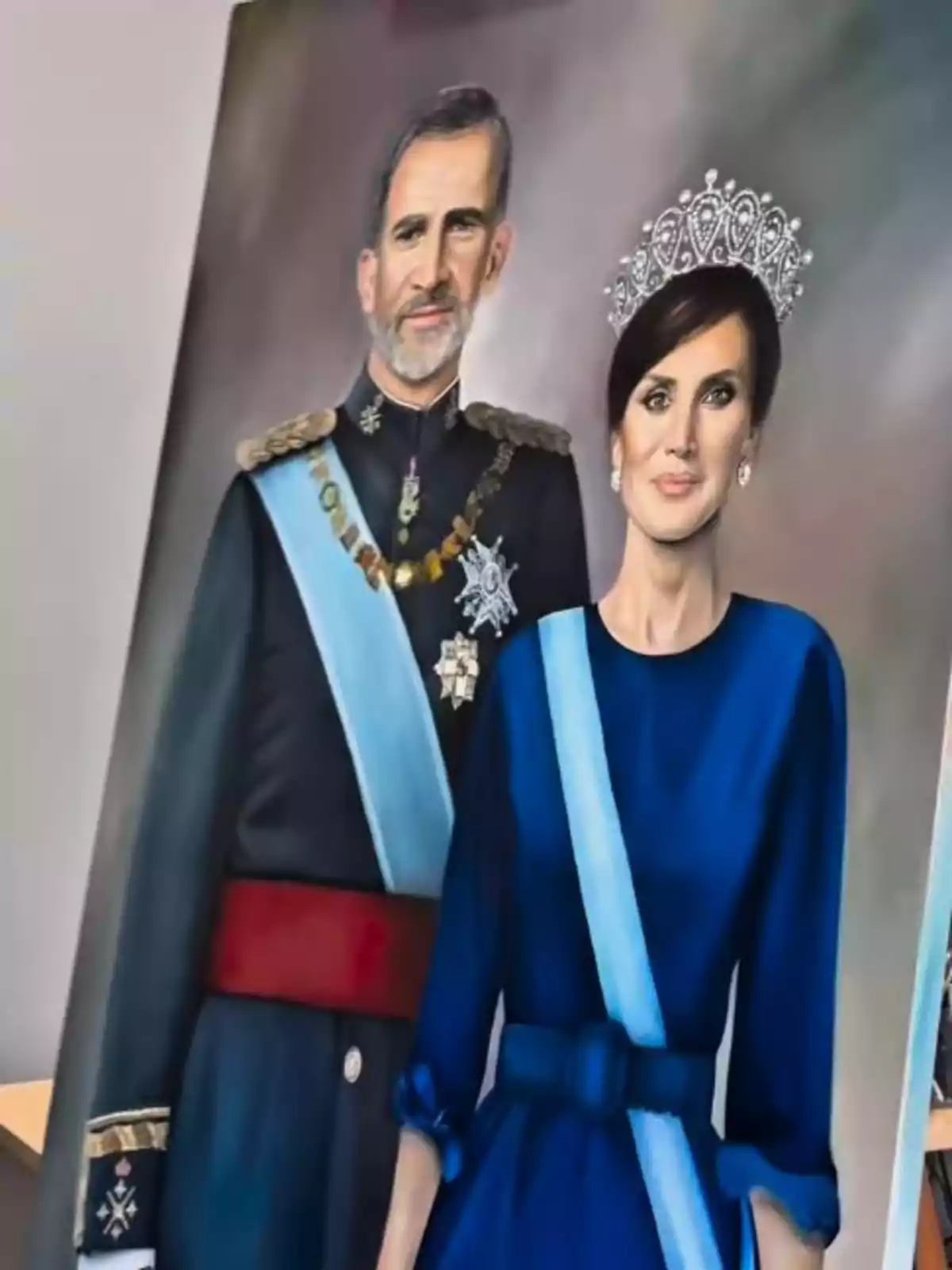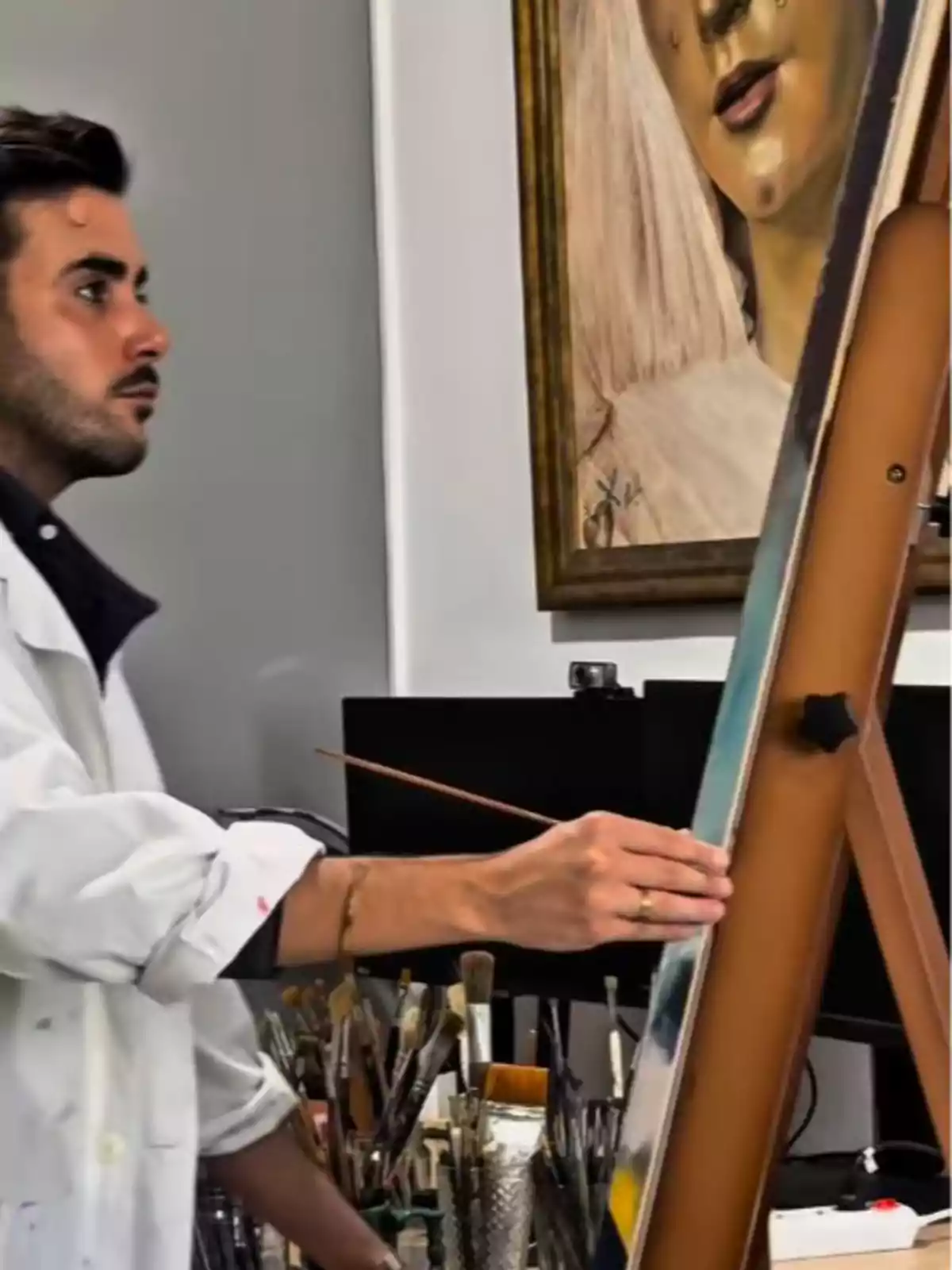The new portrait of King Felipe VI and Letizia has sparked notable interest since its unveiling. The work is not official, but its media impact has been immediate. Its success has turned it into a topic of debate and the painter into one of the most talked-about names of the moment.
What seemed like just another artistic project has ended up generating debate in the media. The anticipation centers on the way the painter has depicted Felipe and Letizia. Above all, on a detail that few have overlooked.

A portrait with institutional ambition
The work was created by Alberto Rubio from Seville, a young 30-year-old painter with experience in sacred art. It is an oil on panel measuring 47 in. by 28 in. (120 by 70 centimeters) that took a year to complete. The artist shared part of the process on social media.
Rubio explained that his intention was not only to paint the monarchs, but also the institution they represent. For him, it was both an artistic and personal challenge. The result, according to him, is a piece full of nuances and chromatic depth.
The painting shows Felipe VI in formal attire and Letizia in a dress from her state visit to the Netherlands. The artist wanted to revive the tradition of court painting. The result is reminiscent of official portraits from the seventeenth century.

The detail in Letizia that has sparked much discussion
The most talked-about aspect of the work has been the element chosen to crown the queen's figure. Letizia appears with the Russian pearl tiara, a historic jewel of great symbolic value. Its selection has been interpreted as a nod to dynastic continuity.
The piece, also known as María Cristina's diadem, is reminiscent of Russian tiaras called kokoshnick. It passed from the regent to Alfonso XIII and, later, to the Countess of Barcelona. Over time, it ended up in the hands of Juan Carlos.
Doña Sofía wore it as a loan at an international celebration in 1971. After the death of the Countess of Barcelona, the jewel was added to the royal jewelry collection. Today, it is once again in the spotlight by appearing in Letizia's portrait.

A gaze that seeks to convey character
Beyond the jewels, Letizia's expression has also prompted comments. The painter states that the queen was the figure who took him the most time to complete. He explained that her gaze required him to redo the brushwork several times to capture the right intensity.
Rubio claims that it is not enough to copy a face, but that one must reflect a presence. In his words, painting is a silent dialogue between artist and subject. In that process, Letizia's gaze became the greatest challenge.
The result is a hieratic and solemn image, with a fixed and direct gaze. The author emphasizes that he wanted to capture the strength of the institution through her. His interpretation reinforces the idea of a committed queen who is aware of her role.

